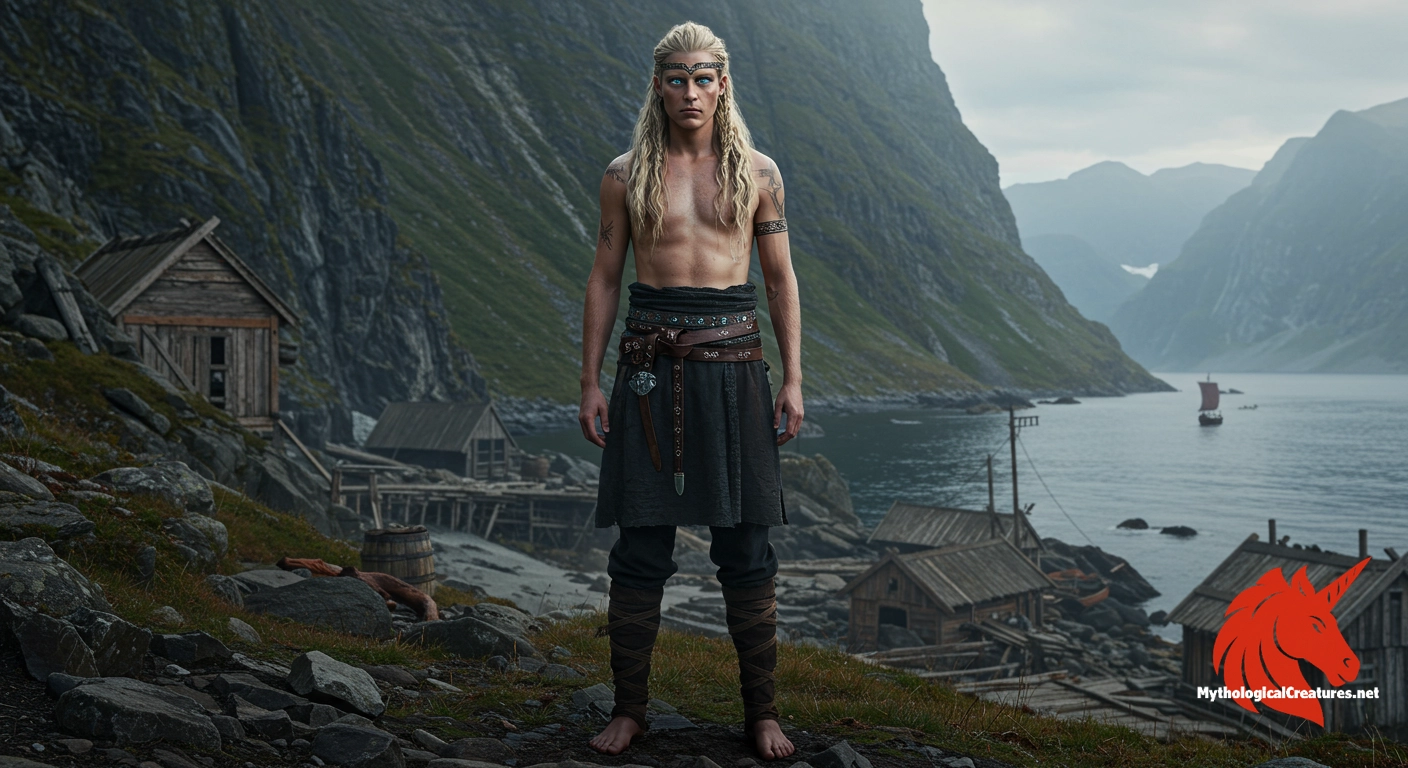Åsa Haraldsdottir of Agder: Åsa Haraldsdottir of Agder was a semi-legendary Norwegian queen regnant of the Viking Age whose reign is chronicled in Norse sagas.

Åsa Haraldsdottir of Agder
Åsa Haraldsdottir of Agder - Her lineage significantly influenced the saga tradition and the historical narrative of early Norwegian royalty.
Origins & First Encounters
Åsa Haraldsdottir of Agder emerges from the mists of the Viking Age as a figure whose life straddles the realms of history and myth. She is remembered as a semi-legendary queen regnant of Agder, a coastal region in southern Norway noted for its vibrant maritime culture. Her story is interwoven with the early narratives of Scandinavian royalty, where oral tradition and saga literature provided the first attestations of her existence. These early accounts are deeply embedded in the Yngling lineage, linking her to celebrated figures like Halfdan the Black, Sigurd Ring, Harald Fairhair, and even Ragnar Lothbrok. The tales highlight not only her rulership but also her role as a foundational matriarch whose strength and wisdom helped shape the destinies of future kings. Her reign is depicted as a period of both political dynamism and cultural significance, underscoring the important role of women in an age often dominated by male warriors. The delicate balance between historical record and myth in her narrative invites both admiration and scholarly debate. Her enduring presence in legend continues to inspire discussions about the legitimacy of power and the mystical qualities attributed to early Scandinavian leaders.
Source Texts & Tale Variants
Åsa Haraldsdottir's legend is preserved in a tapestry of textual sources, ranging from ancient Norse sagas to later medieval chronicles. The Ynglinga saga and other genealogical records present her as an integral link in the dynastic chain that connects early Norwegian rulers to later heroic figures. These sources, although fragmentary and occasionally contradictory, contribute to a multifaceted portrayal of her life and influence. In many versions, her narrative is replete with elements that blur the boundaries between fact and folklore, reflecting the oral tradition that carried her story through generations. Some accounts focus on her maternal virtues and political acumen, while others imbue her with an almost prophetic quality that lends divine legitimacy to her offspring. Variations in the recorded tales are evident, with regional manuscripts often selecting different episodes to emphasise her strategic prowess or her symbolic role as a unifier. The layering of these narrative strands over time demonstrates the evolving nature of her legend, influenced by the needs and ideologies of successive storytellers. Additional folklore interweaves supernatural elements, suggesting that her authority might have been blessed by higher powers. The diverse textual traditions serve not only to memorialise her achievements but also to support the political narratives of later dynasties that claimed descent from her.
Form & Powers
Although direct historical descriptions are few, the accumulated legacy of visual and literary representations paints an evocative portrait of Åsa Haraldsdottir. Later artistic depictions envision her as a tall, imposing woman with a noble bearing that commandingly reflects her royal status. Her eyes are frequently described as deep and discerning, hinting at both her wisdom and her uncompromising resolve. Legends suggest that her hair, often imagined as flowing and dark, framed a countenance marked by both beauty and strength. Iconography sometimes includes richly adorned attire, featuring intricate embroideries and symbols that denote her authority. These regalia, imbued with a sense of both elegance and martial readiness, help position her as a warrior queen among her contemporaries. Some portrayals even suggest the presence of subtle scars or marks, emblematic of the trials she endured in battle and governance. The variations in her depiction, whether emphasising graceful nobility or a robust, battle-hardened physique, speak to the dynamic ways in which her legend has been crafted over time. Each recasting of her image serves as a reminder of the fusion of fact and fantasy that characterises her enduring myth.
Regional Faces
Åsa Haraldsdottir's legend has been adapted and reshaped across different regions of Scandinavia, each adding layers that reflect local cultural identities. In Agder, her reign is celebrated not only as a political milestone but also as a cultural emblem of regional autonomy and maritime prowess. Local traditions stress her role as a unifying force during turbulent times, a narrative that helped consolidate community identity in a fragmented political landscape. In other parts of Norway, her story is intermingled with regional folklore that often highlights her supernatural foresight and strategic brilliance. Scandinavian neighbours, including Swedish traditions, sometimes incorporate her tale as a vital link in the broader Yngling lineage, underscoring the interconnectedness of early Nordic monarchies. In some Finnish and Baltic accounts, she is portrayed in a way that emphasises mystical attributes and a profound connection with the natural world. These regional variants often introduce unique motifs—such as sacred local landmarks or ritual practices—thereby rendering her a symbol adapted to specific cultural and geographical contexts. The malleability of her story across borders highlights not just the spread of a single myth, but also the creative reinterpretation of shared heroic ideals. Each regional iteration reinforces her status as a versatile emblem of power and resilience that transcends local confines.
Cultural Parallels
The legend of Åsa Haraldsdottir invites comparison with a host of other mythic figures who embody the potent mix of rulership and maternal virtue. Her portrayal shares resonances with notable female leaders in other cultures, such as the Celtic warrior queen whose defiance in the face of subjugation has echoed through time. Much like these counterparts, she is celebrated not just as a monarch but as a progenitor of heroic destiny, with her lineage serving a legitimising role in the political narratives of later rulers. The archetype she represents—a formidable, almost mystical maternal figure—appears in various Indo-European traditions, where the authority of the female head of state is intimately linked with fertility, protection, and cultural continuity. Her narrative, imbued with elements of divine favour and prophetic insight, aligns with similar legends from the Mediterranean and Near Eastern mythologies, where maternal legacies ensure the transfer of power and wisdom. This shared motif across cultures emphasises both the nurturing aspects and the powerful leadership qualities attributed to such figures. The comparative framework not only highlights the universality of the warrior queen archetype but also underscores how myth-making serves to elevate historical personages into symbols of timeless authority. By placing her narrative alongside those of other legendary queens, we gain insight into the ways that societies use myth to encode values such as courage, loyalty, and relentless fortitude.
Legacy & Modern Evolution
Åsa Haraldsdottir's transformation from a semi-legendary queen into an enduring symbol of female empowerment mirrors the evolution of myth itself. Early saga accounts embedded her within the genealogies of great kings, lending an aura of divinely sanctioned authority that was crucial for legitimising rulers. Over the centuries, her story has been revisited and reinterpreted, often reflecting the changing attitudes towards gender and leadership in Nordic culture. In the modern era, her legacy has taken on fresh dimensions as scholars and artists alike rediscover her narrative as a beacon of resilience and strategic brilliance. Contemporary adaptations, whether in literature, visual arts, or public commemorations, tend to foreground her role as a pioneer who defied the predominantly patriarchal norms of her time. This renewed interest not only reaffirms her place in the annals of Viking lore but also fuels broader discussions about the representation of women in early medieval history. Her saga is increasingly seen as a source of inspiration in feminist reinterpretations of Viking narratives, challenging traditional gender dynamics. Public festivals and academic symposiums in Scandinavia have further cemented her status as a cultural icon, bridging the gap between myth and historical inquiry. As a result, Åsa Haraldsdottir continues to serve as a potent symbol of empowerment whose story has been crafted to speak to modern audiences while remaining firmly rooted in the storied past of the Viking Age.
Interesting Fact
She is one of the very few semi-legendary queen regnants recorded in Norse sagas, and her matrilineal legacy connects her directly to some of the most famous figures in Viking lore.
Quick Creature Info
Origin:
Features:
Our Mythic Legendary Rating:

Habitat:
Physical Attributes:
Lore:
References
Discover Another Mythical Legend You May Not Have Heard Of?
Uncover the mysteries of ancient folklore and expand your knowledge of legendary beings from cultures around the world.
Dare to Meet the Seri Gumum Dragon....
Curated by the Mythological Creatures Team (rev. May 2025)
